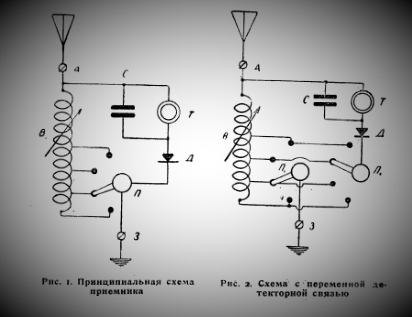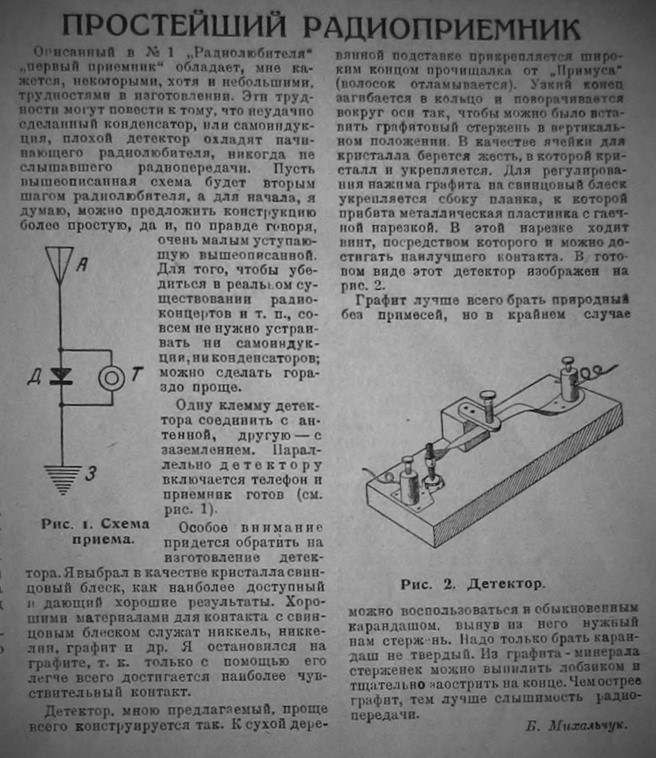
The mid-twenties of the last century is a very difficult and controversial period in the history of our country. People have not yet recovered from the horrors of the civil war, life was not rich, but the conquest of the Arctic had already begun, aviators and aeronauts stormed the “fifth ocean”, and the country was rapidly electrified and radioized.
Space exploration was on the agenda: in 1922, writer A.N. Tolstoy publishes the novel "Aelita (Sunset of Mars)." In this novel, two earthlings, engineer Los and Red Armyman Gusev, fly a rocket to Mars, discover a developed technological civilization on Mars and arrange a “proletarian revolution” there.
Every boy (and the girls were not far behind) wanted to be a pilot or a sailor. Children and adolescents engaged in ship-making, model-making, and radio circles to be on the cutting edge of progress.
Captain Hatteras I'll pour sour kvass
Fast forward to the Moscow courtyard of the mid-twenties. A young man of criminal inclinations observes through a window a pioneer Mitya Strelnikov. Mitya set aside Jules Verne's science fiction novel about the brave conqueror of the North Pole, Captain John Hatteras, to listen to the broadcast of this book on the detector receiver, which Mitya collected in a pencil case.
A young man of criminal inclinations - a thunderstorm of the yard Vaska Taburetkin intends to commit hooligan actions using technical means. And for this he has an expensive two-lamp radio.
Now the broadcast has begun. Radio amateurs, with bated breath, listen about adventures in the Far North, but Vaskin’s voice bursts into the radio program: “Greenland ... Chepuhland ... Captain Hatteras ... pour sour kvass ...” But it turns out that Vaska Taburetkin is loudly yelling all this nonsense on his radio, and the radio broadcasts it!
Such behavior outraged the pioneer Mitya Strelnikov. He goes to the apartments of the house where he lives. Adult radio amateurs do not want to go to battle with a bully, but a group of twelve young radio amateurs, boys and girls, gather in the yard.
Although they are all afraid of Taburetkin, evil is severely punished, and the radio-hooligan receiver dies under a chest of drawers.
What was it
The story was first published under the name "Radio Pest" in 1928 in the "Krasnaya Gazeta". In the collected works of A.N. Tolstoy, he is already included as "The Story of Captain Hatteras, of Mita Strelnikov, of the bully Vaska Taburetkin and of the evil cat Hama." The story is a vivid illustration of the history of the development of the amateur radio movement in the USSR. Not only working people participated in this movement, but even, as you see, the “declassed element” Vaska Taburetkin!
What specific model of the radio was used by Vaska, it is not possible to establish from the text. Most likely, the receiver was regenerative, and broadcast due to the microphone effect of the lamps or chassis. Tapping on such a receiver with something heavy, Vaska could well transmit messages with Morse code, if he could.
Mitin receiver, most likely, was assembled according to the scheme from the journal "Amateur Radio" No. 3, 1924. In order to receive the radio station named after The Comintern, the sensitivity of such a receiver was quite enough.

To implement the above scheme, it was necessary to have minimal locksmith skills and be able to independently melt the crystal.
The crystal for the detector was melted from a mixture of lead sawdust with sulfur in a test tube. The resulting crystal was mounted on a ground base, and the upper part of the crystal was neatly chipped. Then, during the setup process, they poked into the cleavage site with a sharp graphite rod or a steel needle connected to the antenna until a reception appeared.
Hams needed a design that contained a minimum of electronic components, but with good sensitivity.
At that harsh time, components such as resistors and capacitors, not to mention inductors, were manufactured by radio amateurs themselves. Inductors were wound on cardboard frames with a ring wire. Resistors were made from pencil leads or nichrome wire. Capacitors were collected from tin foil (stanyol) leaves laid with paraffin-impregnated paper.
Particular difficulties arose in the manufacture of variable capacitors. It required good locksmithing skills and equipment.
Detector receiver system engineer Shaposhnikov
The description of the receiver, which does not contain a variable capacitor, was published in the journal "Amateur Radio" No. 7, 1924. The input resonant circuits of the receiver were tuned using a variometer: a specially designed inductor coil.

ATTENTION! USING ELECTRIC WIRES AS ANTENNA IS DANGEROUS FOR LIFE!
The author of this receiver was an employee of the Nizhny Novgorod radio laboratory Sergey Ivanovich Shaposhnikov.
The main task of the Nizhny Novgorod radio laboratory at that time was the development of high power radio tubes for the needs of broadcasting, but the NRL employees knew that without the mass distribution of radio receivers, their work does not make sense.
Engineer Shaposhnikov managed to develop a radio receiver design that possessed not only good technical characteristics, but also good repeatability. What ensured this "detector" high popularity.
In the future, the scheme was repeatedly reprinted. When repeating the design, many hams parallel to the variometer connected a capacitor, turning it into a canonical LC circuit.
From the collection “Nizhny Novgorod Pioneers of Soviet Radio Engineering” about Shaposhnikov’s receiver:
“... he developed, manufactured, tested and described in detail the simplified design of a detector radio with galena, which almost every amateur radio operator could make on his own. From the purchased parts, for this it was enough to get an ordinary or better headphone. Everything else could be done with complete confidence in the success with your own hands according to the exact instructions given by Sergei Ivanovich.
... The description of the “Shaposhnikov’s receiver”, which gained fame throughout the Union, was issued by the laboratory in several editions as a separate brochure. Even a postcard was printed with an image of the receiver circuit and its technical parameters. Then this description passed into the widespread amateur radio literature.
Almost all the radio amateurs of that time began their practical study of radio engineering with the manufacture of the Shaposhnikov receiver and with their own experiments to improve it. ”
Meanwhile ...
In the meantime, the Radio Amateur magazine was preparing for publication, dedicated to Losev’s cristadine, another employee of the Nizhny Novgorod Radio Laboratory. But that is another story…
Instead of an epilogue
Hams from the story of A.N. After the reprisal against Vaska Taburetkin, they will “catch the waves either from Berlin, then from Stockholm, then from London, then from Moscow”.
Tolstoy Alexey Nikolaevich (1883 - 1945) - “red count”, three times the Stalin Prize laureate will make friends with M. A. Bonch-Bruevich. E.T. will write about this in his book. Krenkel.
Shaposhnikov Sergey Ivanovich (1887 - 1960) - will publish a series of articles on amateur radio measurements in the journal "Amateur Radio". In 1928, during the merger of the NRL with the TsRL, he will move to Leningrad. He will be awarded the Order of the Red Banner of Labor, and then the Order of Lenin.
From the author
The historical essay was created based on the following materials:
1. Tolstoy A.N. A story about captain Hatteras, about Mitya Strelnikov, about the bully Vaska Taburetkin and about the evil cat Hama. Collected Works in 8 volumes. - M .: True, 1972
2. "Radio amateur", 1924, No. 3
3. "Radio amateur", 1924, No. 7
4. ru.wikipedia.org/wiki/Tolstoy , _Alexey_Nikolaevich
5. Ostroumov B. A. Nizhny Novgorod pioneers of Soviet radio engineering - L .: Nauka, 1966
6. www.museum.unn.ru/managfs/index.phtml?id=13
Although the genre of the historical essay does not imply an explanation of the operation of a particular technical solution, the next article in the cycle will briefly describe the principles of operation of the detector and heterodyne receivers. Without such descriptions, talking about Kristadin by Losev will be very difficult.